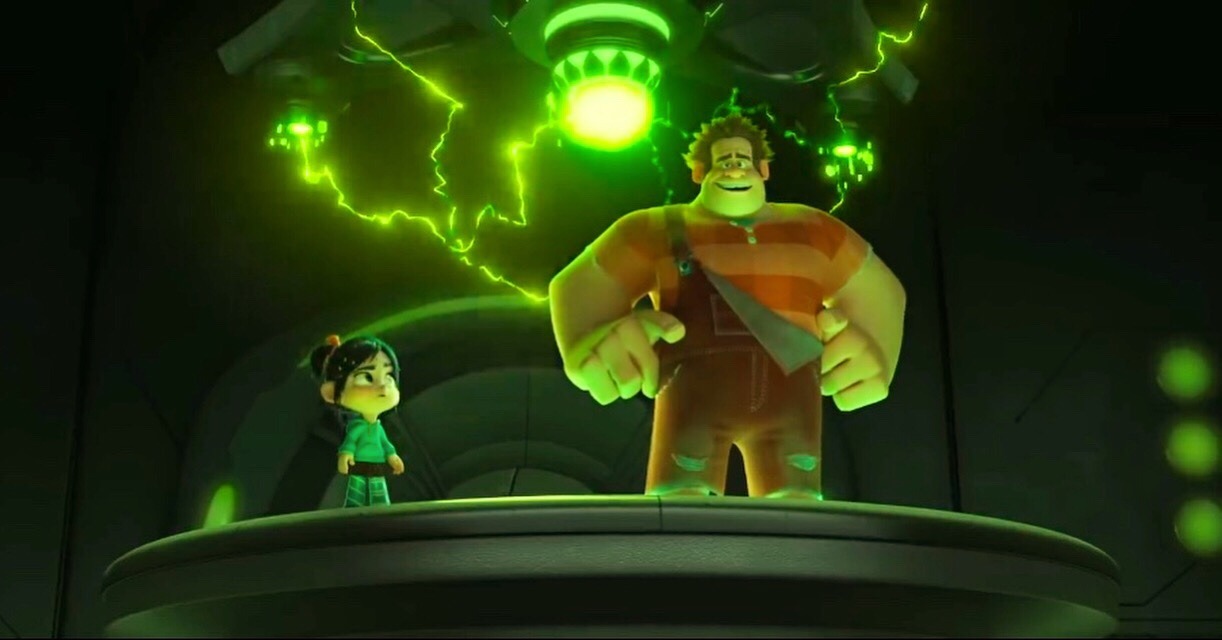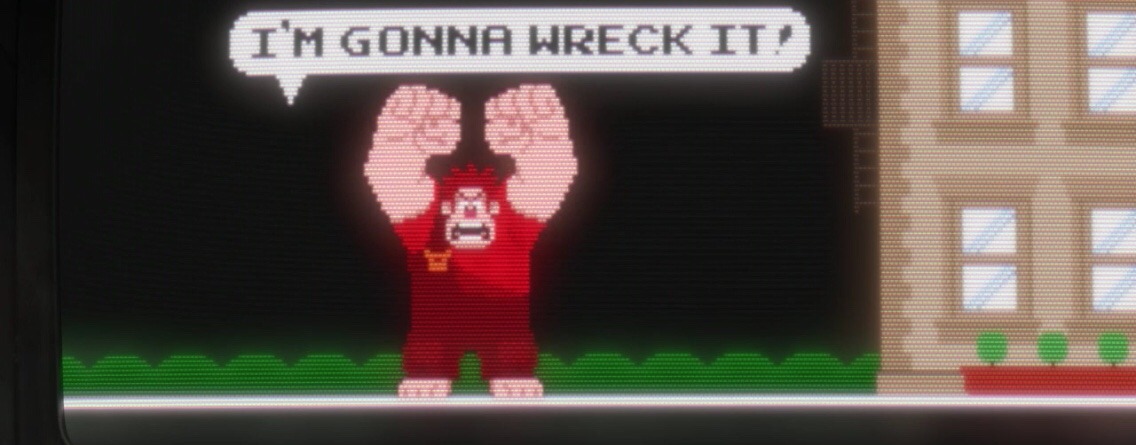A sequel to a Walt Disney Animation Studios feature is a rare beast. While the 1990s and early 2000s were plagued with cheaply made straight-to-video sequels (a few of which did gain cinema release) produced by the television arm DisneyToon Studios, no feature since the 2008 release The Little Mermaid 3: Ariel’s Beginning (Peggy Holmes) has bared this indignity. Other animation studios such as Pixar, DreamWorks and Blue Sky have regularly released sequels to their biggest hits with varying quality, but I was glad that Disney had abandoned exploiting their product in this way, especially as their last decade has seen a run of exceptional original movies, arguably their best since the Walt-era features. So it was with some trepidation that I viewed Ralph Breaks the Internet, the sequel to the excellent 2012 original Wreck It Ralph and I am happy to report that I was not too disappointed.
Ralph Breaks the Internet sees video game buddies Ralph and Vanellope Von Schweetz leave their respective games in Litwak’s Family Fun Center and Arcade and travel to the internet, initially eBay, in order to retrieve a spare part to repair Vanellope’s Sugar Rush game. On the way they visit the noirish Dark Net and unwittingly unleash a devastating virus but not before a sojourn in hyper-real racing game Slaughter Race and an encounter with the Disney Princesses in a neat cameo via the Oh My Disney website.
Yeah, the plot is slightly convoluted! This is where Ralph 2 suffers most in comparison to the original movie; the simple story of bad guy who wants to be good is simply more appealing, not to mention more streamlined, than what is on offer here. It also has a mildly unsatisfying conclusion and a slightly muddled message, a little at odds with that of the first film. Still, Ralph Breaks the Internet is a lot of fun and is visually spectacular. While this movie doesn’t quite live up to the original it is certainly well worth 2 hours of anybody’s time and I guess bodes well for the next Disney Animation sequel, due for release in November 2019; a little movie named Frozen 2…
Yeah, the plot is slightly convoluted! This is where Ralph 2 suffers most in comparison to the original movie; the simple story of bad guy who wants to be good is simply more appealing, not to mention more streamlined, than what is on offer here. It also has a mildly unsatisfying conclusion and a slightly muddled message, a little at odds with that of the first film. Still, Ralph Breaks the Internet is a lot of fun and is visually spectacular. While this movie doesn’t quite live up to the original it is certainly well worth 2 hours of anybody’s time and I guess bodes well for the next Disney Animation sequel, due for release in November 2019; a little movie named Frozen 2…




















